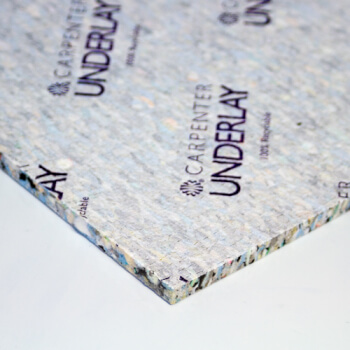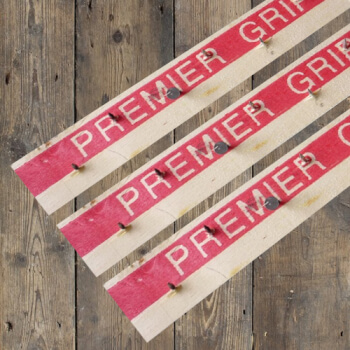faq > Measuring & Fitting > Q01
How do I measure my room/stairs?
You can download our printable measuring guide pdf, watch the videos or read the text below for all the basic information, and if you require any further assistance feel free to e-mail us your floor plan and we may be able to advise you further.
WHAT DO YOU NEED
We advise you get a stiff metal tape measure, a pencil and a notepad, often people use graph paper because it can help visualise the area.
If your room has alcoves or a bay window, make sure you always measure from the widest points, including extra for any doorways.
MEASURING A ROOM
We advise beginning by sketching out the room, highlighting all walls and marking door positions. Measure the furthest possible lengths and widths of the room and note any door recesses or bay windows too.
If the room has alcoves then measure the width and depth of them as this may come in handy if your room requires joins.
As a rule of thumb, if you measure every wall in your room then you’ll be able to easily work out the total length and width required.

MEASURING A HALL
The common mistake when measuring halls is not allowing room for doorways.
Draw a sketch of the hall detailing all walls, doors and storage space that is applicable. Measure the sizes as the arrows suggest in the diagram allowing for the maximum width and length, sometimes with L shaped halls you can end up having a lot of waste so it's important to take as many measurements as possible to see if you can use the waste for any additional areas such as the stairs.
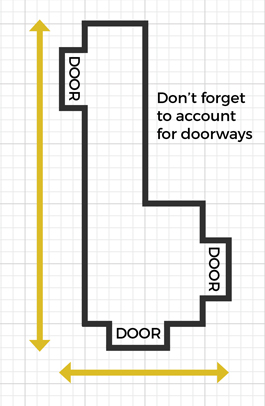
MEASURING A LANDING
Similar to measuring the hallway except you have to account for including the riser/lip of the top step, sketch out the landing and draw the landing shape by standing at the top step. Always mark where the landing meets the stairs with an ‘X’ or by drawing out where the stairs go. It is important to note that the landing piece of carpet always includes the top riser of the stairs so measure over the top step as shown by the arrow in the diagram below.
Measure the total width and length remembering to allow room for door recesses, it’s important to take as many measurements as possible as you may be able to use the waste for your stairs or another room.
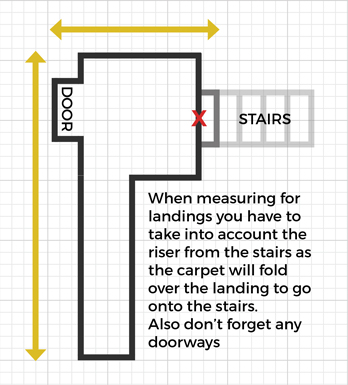

MEASURING STAIRS
When measuring a flight of stairs then you do not need to measure the length of stairs, instead the following measurements are needed:
The length of the tread and the riser of one step of the stair- as marked 'A' in the diagram.
The width 'B' of one step but always check two or three other steps to make sure the measurements are the same.
The reason why it’s important to make a note of the individual step measurements is because you can fit stair carpet with each step individually as the joins are hidden in the groove of the step.
If the measurements or steps vary then note down the different measurements, there are instructions on winders and bullnoses further below.
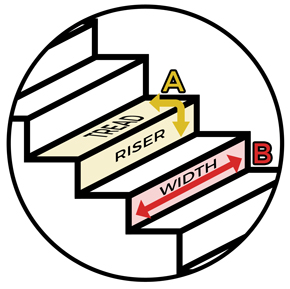
MIDDLE LANDING
Similar to the main landing, the carpet on the mid-landing needs to flow down over the riser, so you need to include the riser measurement in the mid-landing’s measurements.
WINDERS
Some staircases have steps designed to turn corners - these are known as winding stairs or simply ‘winders’, and there are several important things to take into account when measuring them.
When finding the width of a winding stair, always measure at the widest point. This can feel odd, as often your tape measure won’t be perfectly parallel to the edge of the step, but doing this will ensure that you have enough carpet to cover the whole area.
Similarly, when measuring the depth and riser, measure starting from where the step is deepest whilst keeping the tape at a 90 degree angle to the edge of the step to make sure you get the furthest possible measurements.
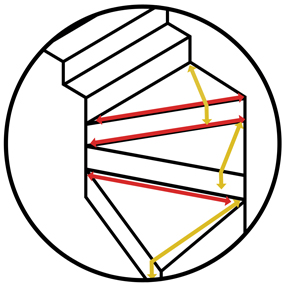
BULLNOSE
A bullnose step is a larger curved bottom step at a staircase, sometimes a staircase can have two and they can come in a variety of shapes and sizes.
Please note that this step is not on every staircase as sometimes you will just have straight stairs without a bullnose. It is important to measure all the way around the bullnose at its widest points and to allow a little extra for safety.
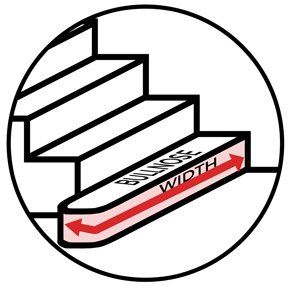
Enter your required size for our most accurate pricing and availability.








